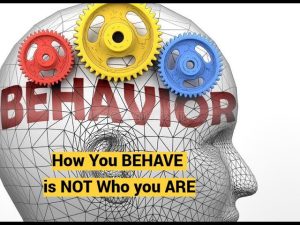Summary on Narcissistic Personality Disorder (NPD)
1. Realization and Diagnosis of NPD
- The speaker realized they had NPD after multiple rock-bottom moments involving personal losses, financial ruin, and diagnosis by mental health practitioners, including during incarceration for financial fraud [00:00].
- Early diagnoses did not resonate, but persistence led to self-study and understanding of the disorder [05:10].
2. Scarcity of Information and Personal Research
- At the time, there was very little literature on NPD, with the diagnosis only added to DSM in 1980, and limited accessible scholarly work [07:25].
- The speaker developed a personal language to describe inner dynamics of narcissism due to lack of existing frameworks [09:45].
- They created and expanded online communities for victims and narcissists, growing membership from 20,000 to potentially over a million over several years [12:30].
3. Cultural and Societal Dimensions of Narcissism
- Narcissism is not just a mental health issue but also has social and cultural aspects [15:40].
- Narcissists tend to cluster in professions offering attention and power, like politics, clergy, media, and show business [16:10].
- Cultural context influences narcissistic traits: for example, Western/American cultures encourage individual narcissism, while some Eastern cultures have collective narcissism [18:00].
4. Spectrum of Narcissism
- Narcissism exists on a spectrum from healthy narcissism (self-esteem, confidence) to malignant narcissism (lack of empathy, exploitative behavior) [20:00].
- Empathy and ethical behavior are key differentiators between benign and malignant narcissism [21:30].
- Some overlap occurs with other personality and mood disorders, such as borderline personality disorder and bipolar disorder [21:00].
5. Origins of Narcissism in Childhood
- NPD arises from childhood experiences, particularly severe abuse or excessive idolization by parents. Both lead to objectification of the child [25:00].
- The child is treated as an extension or receptacle for parents’ desires or rage and lacks autonomy or boundaries [26:30].
- Narcissism functions as a defense mechanism, creating a “false self” to protect the “true self” from pain [30:00].
- Over time, reliance on the false self can cause the true self to become atrophied or “dead” [32:30].
6. Variation in Children’s Responses to Abuse
- Different children exposed to similar abuse may develop different disorders (NPD, borderline, dissociative identity disorder), potentially due to genetic predispositions and adaptive coping mechanisms [35:00].
- Abuse dynamics evolve over time, sometimes becoming more subtle or involving abuse by proxy [38:00].
7. Relationship Between Narcissism and Other Disorders
- Borderline personality disorder (BPD) is characterized by abandonment anxiety and sadness, in contrast with narcissism’s defense mechanisms [40:00].
- NPD and BPD often coexist or fluctuate within individuals, with the narcissistic part acting as a protector for vulnerable borderline aspects [42:30].
- Cluster B personality disorders may represent fragmented or disorganized personalities formed from trauma and childhood experiences [44:00].
8. Treatment and Outlook
- There is no cure or full healing for personality disorders like NPD or BPD due to the extensive early damage [50:00].
- Treatment can focus on behavior modification to reduce self-destructive and socially harmful behaviors, combined with medication for comorbid conditions (e.g., depression, OCD) [51:30].
- Therapy aims to achieve modest goals rather than full personality change, as the disorders permeate all aspects of the individual’s being [53:00].
9. Personal Reflection and Gratitude
- The speaker expresses hope the listener finds helpful insights in their book and stresses that understanding the disorder is a crucial step [56:00].
Note: Timestamps correspond to approximate elapsed time from the meeting’s start.






